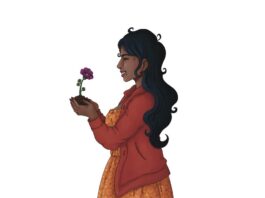Halloween is the only popular Canadian tradition that is supposed to be scary. Most are terrifying simply because of their deliberate and unabashed propagation of consumerism.
Halloween is the second largest shopping season after Christmas in Canada. Canadians spent about $379.7 million on Halloween candy in 2015. And while that’s not as dastardly a large number as the United States’ $2.2 billion the same year, factoring money spent against population size, Canadians spent around $10 per person, while Americans spent closer to $7.
Statistics Canada estimated about 3,870,938 children in Canada went knocking on neighbours’ doors in 2016, up 1.4 per cent from 2015. This year probably saw an increase, too.
Halloween is a stupid day because of cultural appropriation. The whole thing was appropriated by consumer culture. Every year now, it seems the issue of cultural appropriation comes up, and with more ferocity each rebirth. But as Nesrine Malik writes for the Guardian, “Many who accuse others of cultural appropriation aren’t sure what they mean. It is a loose, arbitrary and amorphous notion.”
The Catholic Church turned the Celts’ Samhain into All Saints Day; the night before it later became All Hallows Eve, which was eventually shortened to Halloween. The history of Halloween goes a bit like this:
Origins date back 2,000 years ago to the Celts. Their festival, Samhain, was celebrated on their new year, November 1. It marked the end of summer and harvest and the beginning of the long, cold, and gloomy (and likely deadly) U.K. winter.
On Oct. 31, the night before Samhain, ghosts of the dead returned for a visit. To avoid the ghostys, people left food and wine on their doorsteps (naturally) to keep the ghosts busy. When people left their homes, they’d also wear a mask to trick the ghosts into thinking they were also a ghost. I guess ghosts leave other ghosts alone.
Eventually the Roman Empire conquered most of the Celtic territory. With the Romans came Roman traditions; two Roman festivals were combined with Samhain.
On May 13, 609 A.D., Pope Boniface IV dedicated the Pantheon in Rome in honour of the Blessed Virgin and all the Christian martyrs. The Catholic feast, All Martyrs Day, was established in the Western church. Pope Gregory III eventually expanded the festival to include all saints as well as all martyrs, and changed the date from May 13 to November 1.
Later, in 1000 A.D., the church made Nov. 2 All Souls’ Day, to honour the dead. It was celebrated similarly to Samhain and it’s believed that the church attempted to merge Catholic-approved holidays with pagan ones (like Christmas).
All Souls Day saw celebrations with big bonfires, parades, and dressing up. All Saints Day was also referred to as All-hallows (from the Middle English word, Alholowmesse, meaning All Saints’ Day). Eventually the night before began to be known as All-Hallows Eve, then ultimately, Halloween.
In the medieval tradition of “guising,” young people would dress up and accept food, wine, or money, in exchange for singing, telling jokes, or reciting poetry.
In the 19th century, Scottish and Irish immigrants in America revived their old traditions and trick-or-treating was born. Even then, the day’s activities leaned towards the tricking, and less the treating.
By the 1930s, Halloween had become a secular, but community-centred holiday, with parades and town-wide Halloween parties as the centerpiece.
In the 1950s, the custom began to look like the child-focused, family-oriented, easily marketable day that it is today.
Today, Halloween wouldn’t exist were it not for the important purpose of conditioning young children into future consumers. Though Halloween as a holiday is celebrated by all ages, the practice of trick-or-treating serves as a Pavlovian sort of child-napping. Trick-or-treating is the only major Canadian tradition that is enacted almost entirely for and by children.
Which is odd, because as Steve Almond writes in this book, Candyfreak, “I have a hard time defending the production of candy, given that it is basically crack for children and makes them dependent in unwholesome ways.”
In her essay, “Trick or Treat?: Halloween Lore, Passive Consumerism, and the Candy Industry” Susan Honeyman, professor of English, University of Nebraska, attempts to show how this early socialization through Halloween takes place within the body, “ideologically initiating children into consumer culture through the development of taste.” It quite literally shapes taste by overwhelming the taste buds.
Honeyman writes, “commercial and protectionist practices pacify the young (preparing them to become unquestioning consumers), and frequently Halloween stories reflect this reality, helping to co-opt the audience in the process.” Modern Halloween mythologies tend to reflect the modern, commercial qualities of the day, rather than historical significance.
Sometimes unhappy people talk about cultural appropriation as a consequence of poor costume choice. What about the 2,000 years of continual commandeering of a pagan holiday and recommandeering of a loosely post-pagan holiday for consumer control?
If you ever find yourself getting worked up about some guy wearing a sombrero to a frat party, just remember, the true heart of Halloween as we know it is appropriation for profit.





